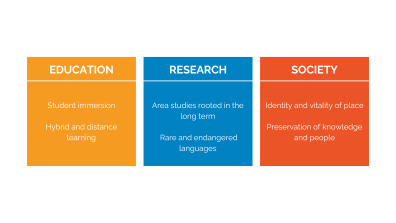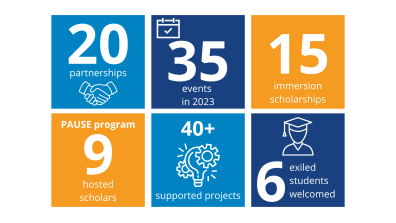The Foundation
It remains the only public university in the world to offer such a broad and prestigious range of programs dedicated to languages and civilizations, both in France and internationally.
Inalco at a glance :
-
106 languages and civilizations taught,
-
9,000 students
-
14 research laboratories
-
1,250 researchers in areal studies and language sciences
-
Trains one-third of France's top diplomats
More than a university, Inalco is a meeting ground for ideas, people, and cultures—a space that champions intercultural dialogue, knowledge-sharing, and equal opportunity.
The Fondation Inalco was created to support the Institute’s mission and long-term growth. As a partnership foundation, it provides a dedicated legal and financial framework for advancing projects of public interest. Its structure combines flexibility in action with strong accountability, thanks to independently certified reporting.
Our mission
The Fondation Inalco Inalco exists to drive the Institute’s development by supporting initiatives that:
- Deepen understanding of today’s world through research, teaching, and public engagement focused on languages and civilizations
- Sustain academic excellence in both education and research
- Highlight the unique skills of Inalco’s students and support their professional success
- Strengthen Inalco’s visibility and influence in France and beyond, through strategic partnerships and global networks
Our priorities for the future
Education:
- Expand opportunities for student mobility and immersive experiences and support academic excellence through scholarships and awards
- Promote innovative learning methods, including MOOCs and digital tools
Research:
- Support Inalco’s cutting-edge research in area studies and language sciences
- Launch and grow research programs or endowed chairs focused on rare or endangered languages and knowledge, in collaboration with universities and museums
Society:
- Help protect endangered cultures and knowledge systems
- Contribute to Inalco’s evolving story and global impact

Key figures
